As Demand Grows for Electric Cars, So Does the Market for Green Jobs in the EV Industry
Analysts expect openings for all types of electric vehicle jobs to expand over the next decade, with new opportunities across the country.
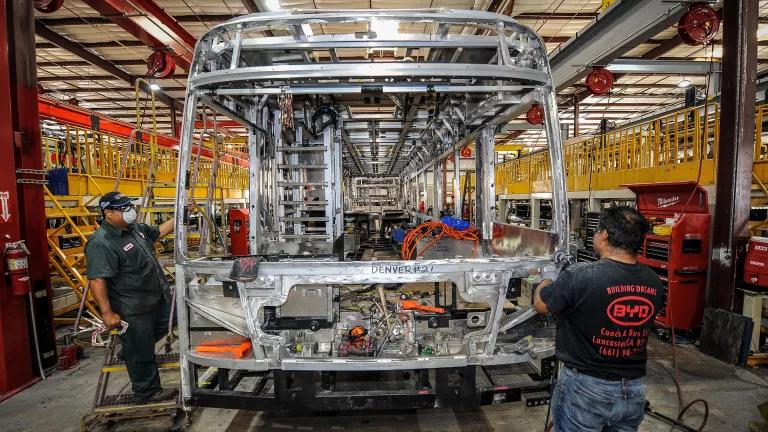
Production of a bus at BYD’s electric vehicle plant in Lancaster, California
Zhang Chaoqun/Xinhua/eyevine/Redux
From software developers and regional planners to vehicle assemblers and construction workers, jobs in the electric vehicle (EV) industry are on the rise. In the United States, EV sales reached a market share of 7.6 percent last year, and according to some estimates, that figure could climb to 67 percent over the next decade. With transportation accounting for more U.S. greenhouse gas pollution than any other economic sector, such a shift could go a long way toward fighting climate change. It would also generate job opportunities in what Mike Miller, a regional director for the United Auto Workers, describes as a rapidly developing part of the automotive industry. And it couldn’t come sooner.
“Last year was the hottest year on record for the planet, and the negative effects of climate change are just getting worse,” Miller says. “The way to make the EV transition go the fastest and be the most effective is to involve workers in the process.”
As battery plants from Ohio to Nevada start operations, and automakers ramp up EV production, the number of new EV jobs and facilities announced in the U.S. auto supply chain has exploded, says Reem Rayef, a senior policy advisor at the nonprofit BlueGreen Alliance Foundation. Together with the consultant company Atlas Public Policy, the alliance runs the EV Jobs Hub, an online resource that details EV manufacturing facilities along with the number of positions available at those locations.
“The transition to clean and electric vehicles and a cleaner economy is a huge opportunity to remedy injustices that underpin our current economy,” Rayef says. “It would be a real shame if we didn't make sure that the people who are benefiting aren't just the folks who drive electric cars but are also the people who live in the communities where they're built and the workers who build them.”
The road to the EV revolution
The reasons for the EV market’s growth are manifold: consumer concerns about climate change; advances in battery technology that allow EVs to travel farther than ever on a single charge; increasing affordability; and the growing availability of hundreds of EV models that appeal to a wider swath of customer demographics.
Legislation has also helped fuel the EV industry. Two laws passed in recent years—the Bipartisan Infrastructure Law (BIL) and the Inflation Reduction Act (IRA)—both spurred investments in EVs. The BIL provides more than a decade of funding for EV charging infrastructure and offers grants to increase the amount of battery manufacturing taking place within the United States. Meanwhile, the IRA offers tax credits to consumers and incentives to manufacturers for domestic EV production. Since the IRA passed in 2022, companies have invested $85 billion in new EV and battery manufacturing and supply chain facilities, resulting in 82,000 new U.S. jobs, according to data from the EV Jobs Hub.
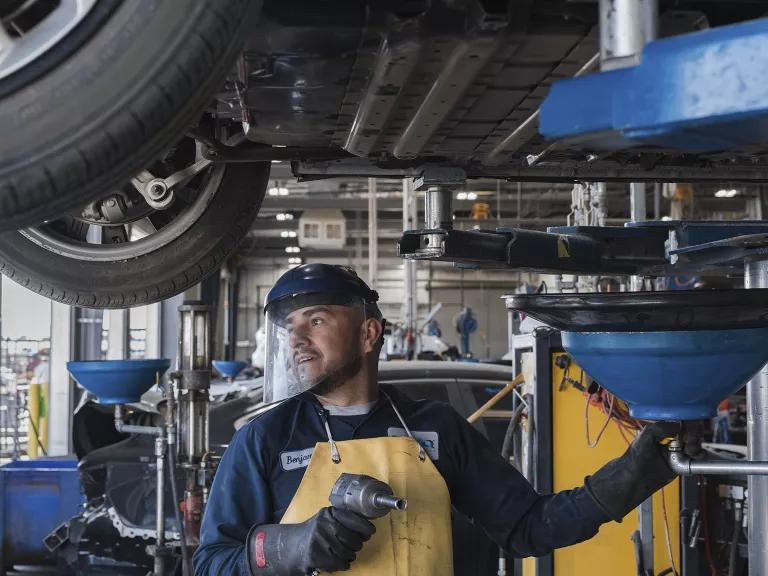
A worker removes the lithium-ion battery from a hybrid car to recycle its components.
Gabriella Angotti-Jones/The New York Times/Redux
Stricter emissions standards for cars could also accelerate demand for cleaner vehicles. This spring, the U.S. Environmental Protection Agency plans to release its final emissions standards for cars and trucks, a move that could further incentivize manufacturers to focus on going more electric. Many automakers, such as General Motors and Volkswagen, have said they aim to produce only electric vehicles by 2035.
Because they promote innovation and technological advancements, “strong vehicle pollution standards are critical for securing automotive jobs in the United States,” says Luke Tonachel, a clean vehicle advocate at NRDC. “The rest of the world is moving to cleaner vehicles, and U.S. manufacturers and workers will be left behind if they aren't making the technology here.”
Though the industry has grown in fits and starts since the first EV cruised U.S. roads in 1890, these recent influences are helping to keep the EV market strong and secure, leading automotive companies, battery makers, and electric charging station installers to invest in the industry and the jobs necessary to keep it humming.
Where the jobs are
According to economists Javier Colato and Lindsey Ice from the U.S. Bureau of Labor Statistics (BLS), EV jobs can typically be found in three sectors: design and development; battery manufacturing; and charging network development and maintenance. In a 10-year forecast of the industry published last year, the economists detailed the kinds of EV jobs out there, the median annual salary, and the level of education needed for the positions.
Design and development
Software developers
As computer technology continues to become a bigger component in automobile manufacturing, the industry will need developers to help connect EV batteries to other components in the vehicle—for instance, the charge port and the electric traction motor, which controls the vehicle’s wheels. These components require computer software, which differ from those in typical combustion engines that have a fuel pump or fuel tank. Colato and Ice estimate that the EV industry will need roughly 140,000 new software developers every year until 2031. People landing these jobs would likely need a bachelor’s degree and make around $120,000 a year.
Electrical engineers
Designing and updating automatic brakes and battery management are just two reasons why the EV industry is in need of electrical engineers. About 7,800 available electrical engineering positions are expected each year. Such engineers would typically earn an annual salary of $100,000 and have a bachelor’s degree.
Chemical engineers
These engineers work with materials needed in EV batteries (such as lithium or cobalt). They also find ways to more efficiently recharge batteries and recycle them after use. According to the economists, each year, there could be openings for about 2,000 chemical engineering jobs, which generally require a bachelor’s degree and garner an annual salary of $105,000.
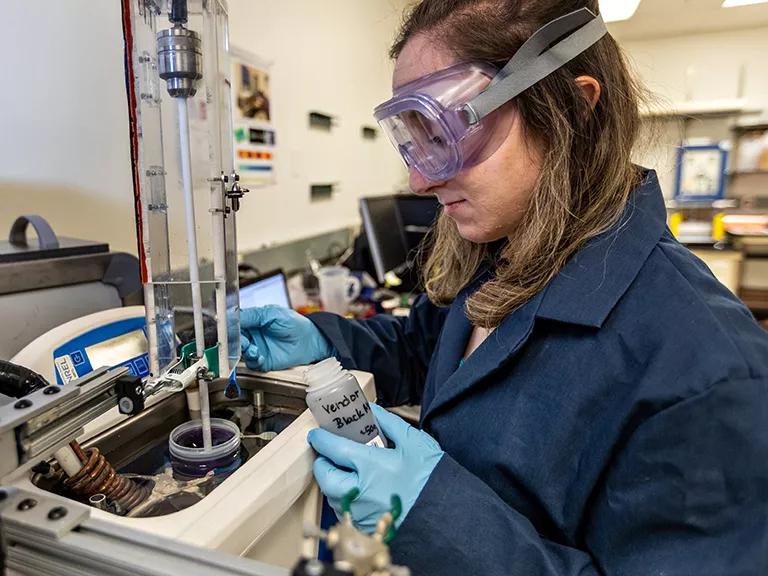
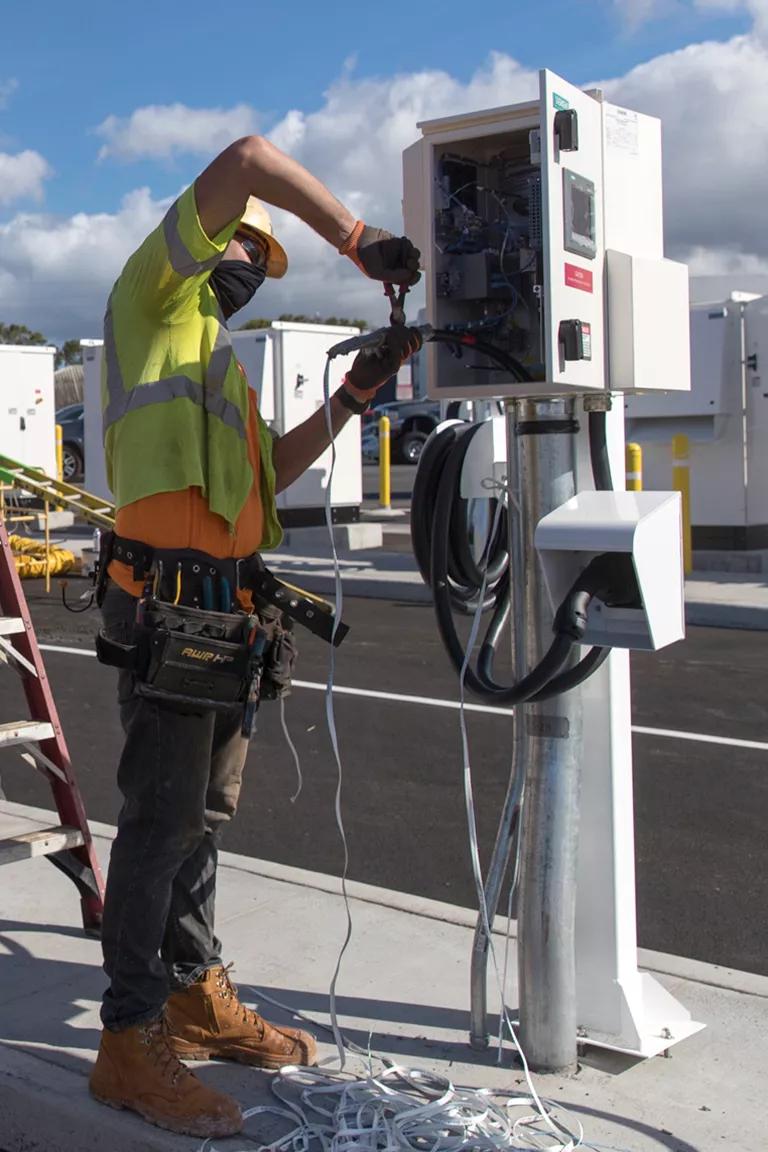
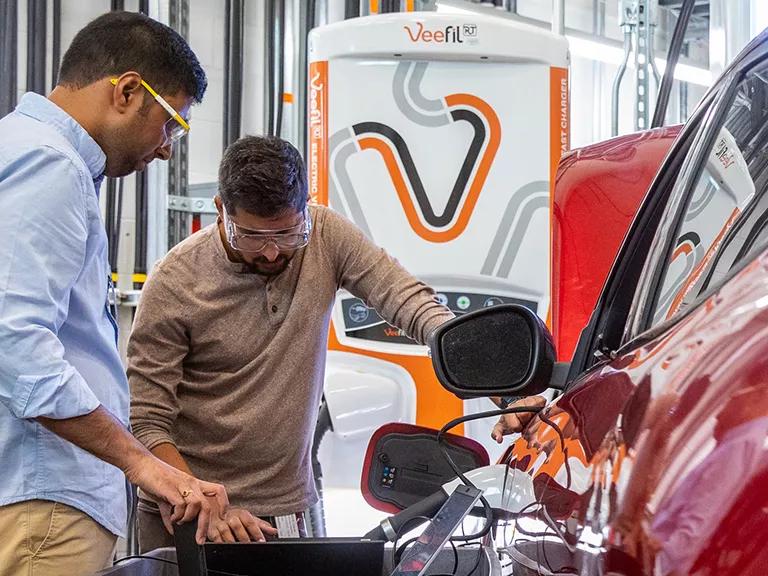
Clockwise from top left: Research work for new recycling methods for lithium-ion batteries; installation of charging station for electric buses; engineers conducting a cybersecurity evaluation for an electric car
Werner Slocum/NREL, 40156
; 2)Marco Garcia for NRDC
; 3)Werner Slocum/NREL, 72378
Battery manufacturing
Electrical, electronic, and electromechanical assemblers
These workers are responsible for assembling different components of electric motors, such as the temperature, pressure, and electrical current sensing equipment. Each position typically focuses on a certain type of equipment, like circuit boards or brakes. Nearly 33,000 jobs will likely open in this space each year over the next decade, positions that require a high school diploma or GED and pay around $38,000 per year.
Automotive manufacturing
The number of assembly line workers needed to put together electrical equipment and EV components is expected to grow nearly 3 percent by 2031. The BLS estimates that there will be more than 142,000 of these jobs available each year. Each one requires a high school diploma or GED and pays $36,500 annually.
Charging network development and maintenance
Urban and regional planners
One thing is certain: The growing number of EV drivers will need more places to fill up, which means we’ll need to rely on a workforce dedicated to expanding the network of chargers. The responsibilities of these planning positions include identifying where to install charging stations so that they’re convenient and close enough together, with equitable access for all drivers. Over the next decade, nearly 4,000 of these jobs could open up annually. Planners require a master’s degree and make $78,000 a year.
Electricians
Not surprisingly, electricians are crucial in getting electricity where it needs to be for EVs to power up. This includes running electrical wires and installing charging stations along roads and highways and in apartment complexes, shopping centers, and garages. Different stations and buildings have different needs, making electricians who have been trained and certified in the practice to be in ever-increasing demand as more and more places offer parking spaces to vehicles that need to charge. The BLS estimates that each year there will be nearly 80,000 openings for such electricians, who will need a high school diploma or GED and likely get paid $60,000 annually.
Power line installers and repairers
Transmission and distribution lines connect charging stations to the grid, and those who install them may also need to fix and upgrade them. As many as 11,000 of these jobs, which require a high school diploma or GED and pay nearly $83,000 annually, could be created each year.
Construction laborers
These jobs are for those who dig, bore, and backfill to prepare areas for charging stations. The BLS predicts 143,000 openings for this job category each year. Such positions require no formal education and pay about $40,000 a year.


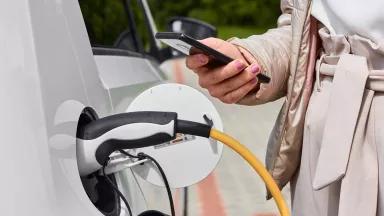

Electric vs. Gas Cars: Is It Cheaper to Drive an EV?
How to Ditch the Biggest Fossil Fuel Offenders in Your Life
How You Can Stop Global Warming